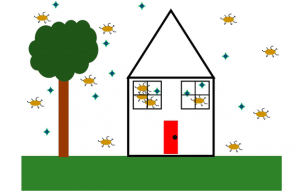In the world of built environment (BE) microbiome research, we are by now well aware that building designs have influences on the indoor microbial assemblage. Therefore, BEs that employ a multitude of innovative designs, such as green and zero carbon buildings (GBs and ZCBs), may provide us greater insight on the mechanistic basis for …
Our group here at the City University of Hong Kong is interested in looking at microbial communities in built environments (BEs) of various sorts, including subways and residences. We have recently come up with a review article describing how outdoor and indoor occupants help shape a potential global BE “pan-microbiome,” the microbiome that encompasses BEs around the globe, which …
Household air microbial community resembles that of household surface and occupant’s skin? Maybe, maybe not… By Marcus Leung (Twitter @leungmarcus) Indoor microbial communities, such as those found in indoor air and indoor surfaces, have been shown to be closely connected to microbial assemblages on humans. Also, re-suspension of house dust from surfaces following routine residential …
Note by Jonathan Eisen Last week I saw an interesting new paper in AEM entitled: Indoor-Air Microbiome in an Urban Subway Network: Diversity and Dynamics. I thought it was of relveance of microBEnet so I wrote to the senior author Dr. Patrick Lee from the School of Energy and Environment and the City University of Hong Kong inviting …

